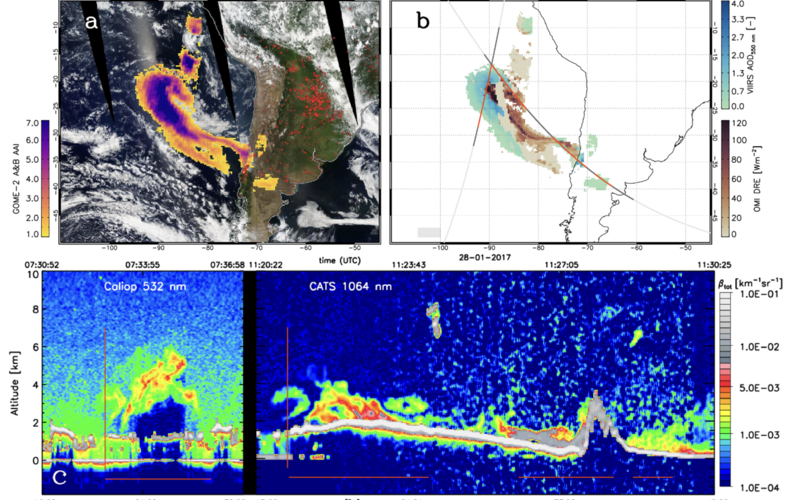
The aerosol shortwave, direct radiative effects of smoke plumes from Chilean wildfires in 2017 and 2023 were derived from satellite observations in both cloud-free and cloud scenes. At the top of the atmosphere, the aerosol DRE changes sign when aerosol overly clouds or open ocean, confirmed by both measurements and a simulation study. The cloud-free daily-mean DRE, computed using an offline radiative transfer model (RTM), was 66 W m−2 in 2023 and 42 W m−2 in 2017, due to absorption by smoke. However, the total radiative effects were larger in 2017 due to a larger plume size compared to 2023. The method presented here provides a new conceptual model to quickly assess the radiative effects of wildfire smoke plumes using satellite measurements and pre-computed RTM results. The presented estimates are strongly affected by the uncertainty of aerosol optical thickness retrievals from satellite, which can be large in the presence of clouds.
M. de Graaf, L. G. Tilstra, P. Stammes. Aerosol shortwave radiative heating and cooling by the 2023 and 2017 Chilean wildfire smoke plumes
Journal: Geophysical Research Letters, Volume: 50, Year: 2023, First page: e2023GL104387, doi: 10.1029/2023GL104387